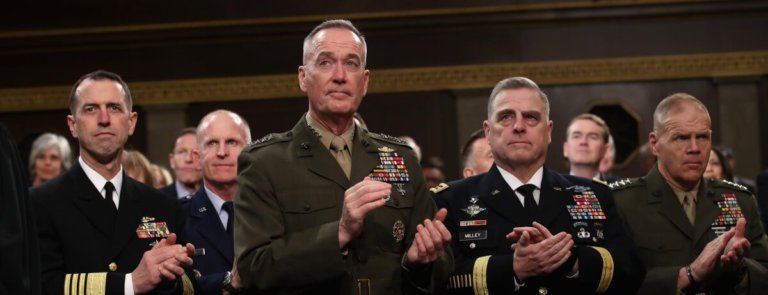
The number one spot in the 2019 Military Strength Ranking goes to the United States. The Global Firepower ranking, which assesses 55 individual factors to determine a nation’s Power Index, is 0.0615 for the US, surpassing Russia (0.0639) and China (0.0673). The perfect score is 0.0000.
Commanding more than 144 million in available manpower, a US$716 trillion defence budget and a diversity of weapons (especially aircrafts), this makes it one of the most important organisations on the globe.
Guts and glory are the obvious requirements. Lesser-known are the brains and the educational backgrounds that fill its top ranks.
Where did they study?
Among the 42 four-star officers – comprising 31 generals and 11 admirals – all possess an undergraduate degree. Joseph Dunford, Chairman of the Joint Chiefs, graduated from St Michael’s College in Colchester, Vermont;while Vice-Chief Paul Selva was a graduate of the Air Force Academy. They reflect the equal split of undergraduate alma maters among the senior commanders: half graduated from one of the five military service academies, the other half from civilian universities.

General Joseph Dunford is the highest-ranking military officer, and the principal military advisor to the President, Secretary of Defense, and National Security Council. Source: Alex Wong/AFP
Of those from military service academies, the US Naval Academy (Annapolis) and the Air Force Academy (Colorado Springs) had the most number of impactful graduates, at seven each. This is followed by the US Military Academy at West Point with five, and the Coast Guard Academy in New London, Connecticut with two graduates.
What did they study?
STEM-based qualifications dominate the elite force’s senior levels. The strongest STEM background belongs to the highest ranking officers in the military – the four-star officers. This makes them superior to their CEO peers when it comes to STEM education, according to the book Degrees and Pedigrees: The Education of America’s Top Executives, by Michael T Nietzel. For example, Vice-Chief Selva’s undergraduate degree is a Bachelor of Science in aeronautical engineering.
Among the non-STEM degree holders is incumbent General Mark A Milley, who has a Bachelor of Arts degree in political science from Princeton University, a Master of Arts degree in international relations from Columbia University, and another Master of Arts degree in national security and strategic studies from the United States Naval War College.

Mark A Millley is one of the senior commanders with non-STEM background. Source: Drew Angerer/AFP
Dunford too holds a Master of Arts degree in Government from Georgetown University and a second Master of Arts in International Relations from the Fletcher School of Law and Diplomacy at Tufts University.
Graduates of service academies reported the highest rates of STEM majors – 79 percent compared to just a third for those from civilian universities.
Did they advance their studies?
Dunford and Milley aren’t the only senior officers with postgraduate credentials. Only four out of the 42 four-star officers do not have a postgraduate degree. More than 40 percent (41 percent) had more than one.
Most pursued a master degree in strategic, security or international studies either from one of these senior service colleges or from a civilian university.
Liked this? Then you’ll love…
The links between education and health
These millionaire CEOs show that a humanities degree can take you far in business







